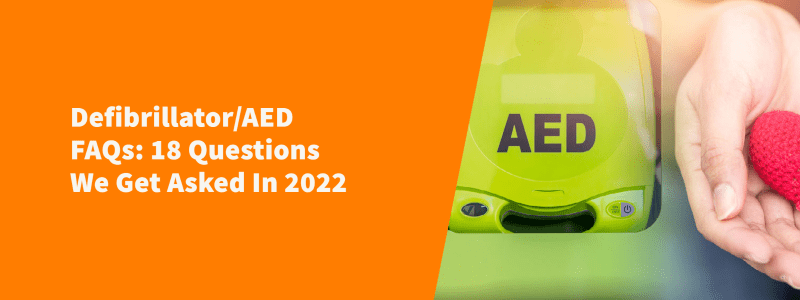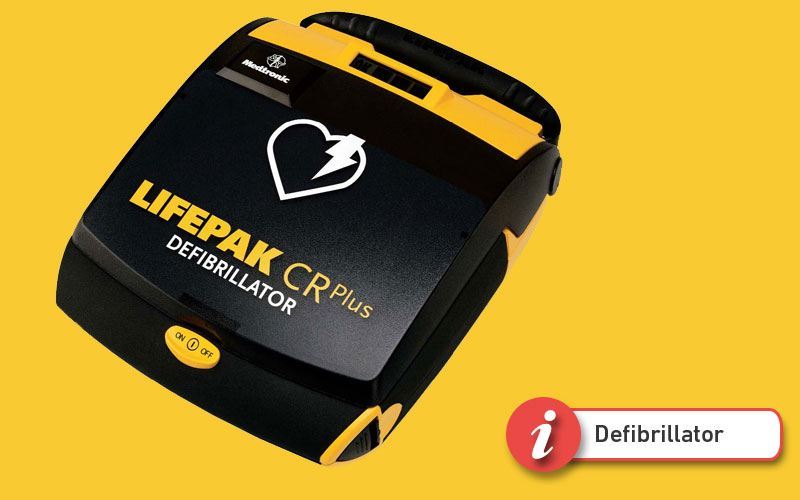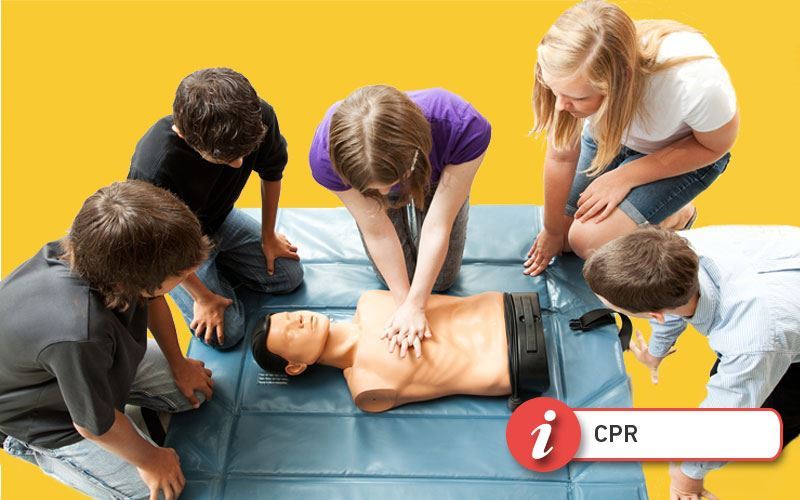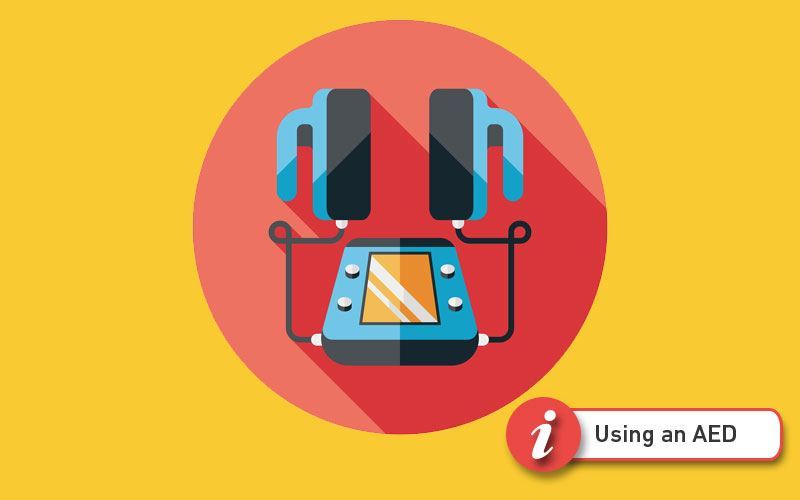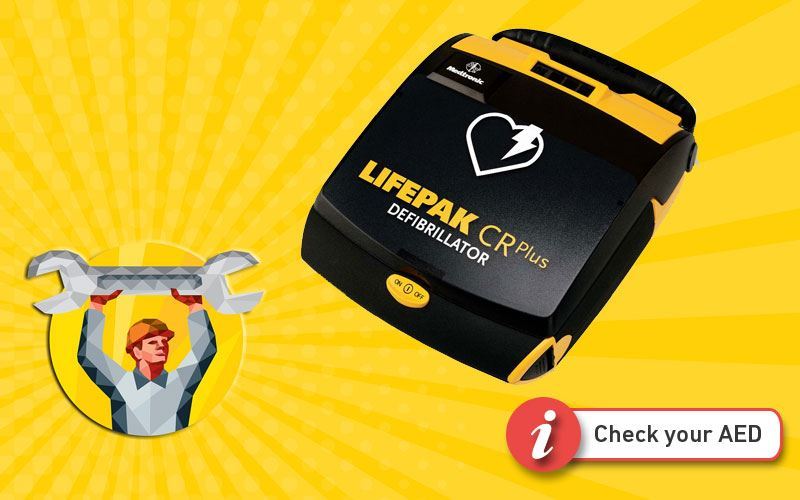Defibrillators are by no means a new product on the market – they’ve been in hospitals, albeit in slightly more large and technically advanced variants, for many years. In fact, Defibrillators were first demonstrated in 1899, when two physiologists from Switzerland discovered that small electrical shock could induce ventricular fibrillation in dogs, and larger charges would reverse it.
Despite being around for a long time, and Sudden Cardiac Arrest being one of the biggest killers in the UK, people are still bemused by them. As a seller of AEDs (Automated External Defibrillators), we’re inundated with questions about them daily. In the interest of sharing our knowledge, here are the 18 most common questions we get asked, and their answers.
Quickly find your question below:
Should I use a defibrillator on vulnerable people such as the elderly or pregnant?
If a victim comes round, how long should I leave the pads on?
1. What is a Defibrillator?
A defibrillator (also referred to as a defib or AED) is a small electrical device that provides a controlled shock to the heart, in the event of a life-threatening arrhythmia called ventricular fibrillation.
2. What is Ventricular Fibrillation?
Ventricular fibrillation (you may have heard of it referred to as VF) is a fatal heart rhythm that most commonly causes sudden cardiac arrest. ‘Going into VF’ is when the heart goes from a normal rhythm to an erratic, chaotic rhythm instantly, therefore causing the pulse and blood pressure to be instantly lost, leading to a loss of consciousness within a few seconds.
3. What is a Sudden Cardiac Arrest?
Sudden cardiac arrest (SCA) occurs when a person’s heart stops beating suddenly, and without warning. When this happens, the blood stops flowing around the body, and therefore leaving the brain and vital organs without blood. This causes an almost instant loss of consciousness and can lead to death within minutes.
The chance of someone surviving a sudden cardiac arrest decreases by between 10-15% every minute that passes.
4. How do I Know if Someone is in Sudden Cardiac Arrest?
The symptoms for a sudden cardiac arrest are most often immediate and without warning.
Suddenly collapsing
Lack of pulse
Not breathing
Unconscious
Despite the often drastic onset of symptoms for a sudden cardiac arrest, sometimes there are other small signs leading up to one, which can include:
Fatigue
Fainting
Blackouts
Dizziness
Chest pain
Shortness of breath
Weakness
Palpitations
Vomiting
5. Who is at Risk of SCA?
A sudden cardiac arrest can happen to absolutely anyone, at any time: fat, thin, short, tall, young or old, active or inactive.
Despite this, there are certain demographics that are more at risk. SCA risk increases with age, and is much more likely if you have underlying heart problems. It is also two or three times more likely to happen to men than women and is somewhat rare in children, although not impossible.
6. What Causes a Sudden Cardiac Arrest?
The direct causes of a sudden cardiac arrest is, as mentioned above, an irregular heart rhythm that leads to a decrease in blood pressure and pulse.
The more indirect environmental factors that can heighten the risk of having a SCA, however, are:
A history of heart disease in the family
Smoking
High blood pressure
High cholesterol
Obesity or being overweight
Diabetes
An inactive or sedentary lifestyle
Excessive drinking of alcohol
7. Is CPR Effective on its Own (When Should it be Used)?
No. CPR will not save the life of an SCA sufferer on its own. CPR helps to circulate a small amount of blood to the vital organs, thus prolonging the dying process until an AED arrives to attempt to resuscitate the victim.
CPR should be used as soon as it is discovered that a victim has no pulse, to help to keep the blood flowing round the body, and should be continued up until the AED arrives. From then on, the AED will instruct you on what to do, including when to perform CPR.
8. Is SCA Different to a Heart Attack?
Yes. To find out about what an SCA is, scroll up to point 6.
A heart attack, on the other hand, isn’t an electrical problem – it is a circulation problem that occurs when blood flow to the heart is blocked. The heart doesn’t usually stops beating during a heart attack, but the longer the victim goes without treatment, the more damage will be done.
We’ve covered this exact topic in our Cardiac Arrest vs. Heart Attack: There’s a Difference blog.
9. How do I use a Defibrillator?
Almost all modern defibrillator are equipped with voice and/or visual commands on how to use. Once you have checked the pulse of a victim after they have lost consciousness, and confirmed that their heart has stopped, you should:
Call an ambulance
Begin CPR at a rate of 2 breaths and 30 chest compressions.
Locate an AED
Turn on the AED
Apply the pads
First check the pads are attached to a cable, plugged into the AED
Ensure the victim is bare-chested – even females
Attach the adhesive pads to the victim’s chest in the appropriate locations
Follow the instructions of the AED very clearly.
10. How Soon Should I use a Defibrillator on an SCA Victim?
As soon as possible. Once you are sure that the victim’s heart has stopped, you should begin performing CPR until a defibrillator can be found, or an ambulance arrives. As soon as a defibrillator is present on the scene, you should hook up the pads (whilst continuing CPR) and proceed to turn it on and follow the instructions.
11. Can I Hurt Someone by Using a Defibrillator on Them?
Almost never. A defibrillator monitors a victim’s heart rate and decides based upon this whether or not to shock. There is almost no way you can injure an unresponsive victim through using a defibrillator and the cost of not using a defibrillator through fear of injuring a victim is incredibly high.
12. Can I Hurt Myself Using a Defibrillator?
Almost never. If the pads are applied correctly then the electric shock is programmed to travel from one pad to another, through the victim’s chest.
You should, however, exercise basic caution, such as verbally warning any bystanders and staying a reasonable distance before activating a shock.
13. Should I Still Use an AED on Vulnerable People, Such as the Elderly or Pregnant?
Yes. If a person goes into sudden cardiac arrest, the chances of them surviving without the help of a defibrillator drop by 10-15% every minute, and they could be dead within 5-10 minutes.
There is almost no outcome where you should not use a defibrillator, even if a victim has a pacemaker installed.
14. Are There Different Defibrillators for Children?
No, but there are different pads available.
Standard AED pads are suitable for use on children older than 8 years. Special infant/child pads that attenuate the current delivered during defibrillation should be used on children aged between 1 and 8 years if they are available. However, in an emergency, if an AED with adult pads is the only device available, its use should be considered. Some AED providers recommend, when using adult pads on a children, to place the pads on the front of the chest and on the back, to lessen the impact of the shock.
The use of an AED is not recommended on children aged less than 1 year.
15. If a Victim Comes Round, how Long Should I Leave the Pads on?
If a victim regains consciousness and tries to get up and go about their day again, you should ensure that they remain on the ground, with the defibrillator pads on their chest, until a qualified medical professional has given them the proper checks and qualified them suitable to carry on their day.
16. How Long do Defibrillators Last?
This varies between defibrillators and brands, but a standard defibrillator should have a battery life of between 5-8 years (you should check what the battery life of your specific defibrillator is).
Most defibrillators have an option to check the state of their battery, and it is recommended to always have a spare battery on site, just in case.
17. How Often Should I Check and Test my Defibrillator?
You perform a visual inspection of your defibrillator every month, to check for signs of visible wear and tear on the device, pads, battery or casing as well as looking for any “expiry date” marking on the pads or battery. It is also recommended to check the status of the battery in the defibrillator, which many allow you to do after turning the defibrillator on.
If you are unsure, you should call your defibrillator provider and ask them for advice/to perform a maintenance check for you.
18. Can an AED be Used When it is Wet or Raining?
Yes, but care should be taken to ensure there is no direct contact between the user and the casualty when the shock is delivered. It is important in this type of scenario
that you dry the casualty’s chest so that the adhesive AED pads will stick and give a good contact when a shock is delivered.
If you are not under shelter and it is heavily raining, you should ensure that you prioritise applying the pads and using the defibrillator over ensuring that the victim’s chest is completely bone dry. The danger of not using a defibrillator is much much greater than using a defibrillator in wet conditions.
To find out more about Defibrillators or if you are interested in purchasing one for your business – head to our defibrillator page
For our commonly asked questions on defibrillators you can read our Defibrillator/AED FAQs: 18 Questions.

